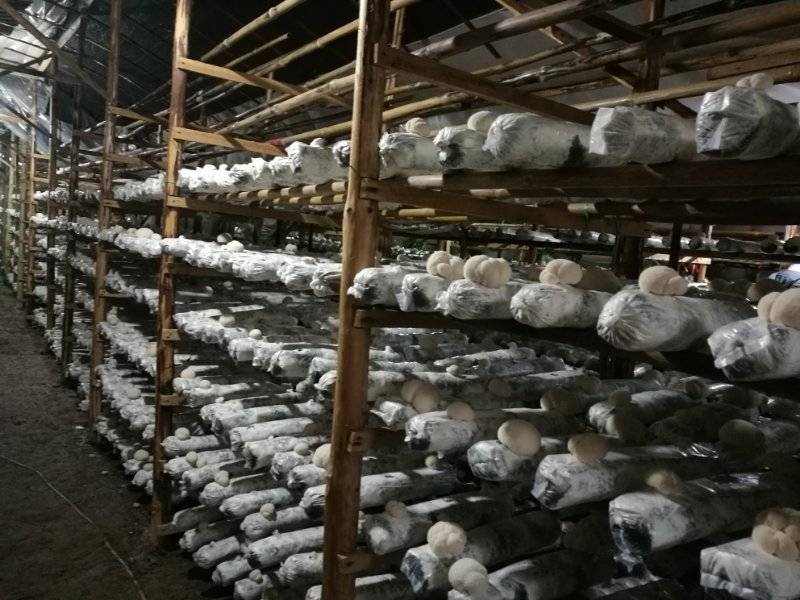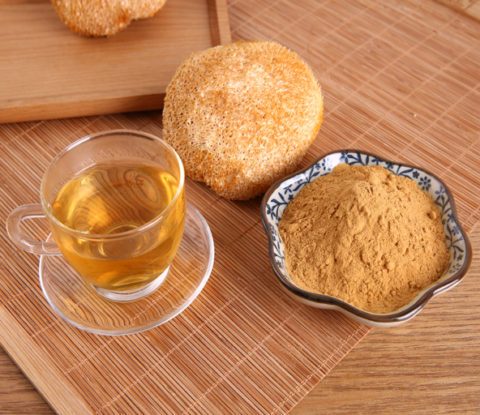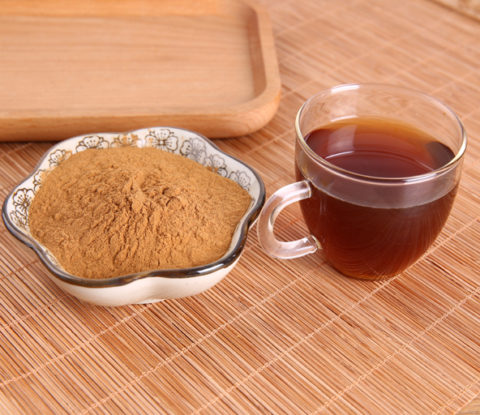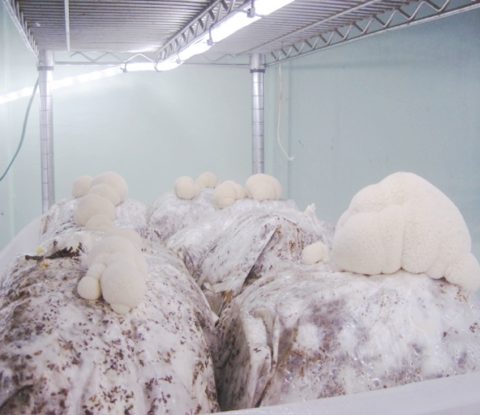
Lion’s Mane Extract Powder(Hericium Erinaceus)Polysaccharide 10%,20%, 30%, 50%UV
Lion's mane extract uses mushroom mycelium and fruiting body, and has full spectrum components: polysaccharide (β - glucan, arabinoxylan, glucose, xylose, galactose and mannose), glycoprotein, ergosterol, triterpene and other fungal nutrients, which are important to support a healthy immunity.
Lion’s Mane /Hericium Erinaceus Extract Powder
【Latin name】: Hericium erinaceus L.
【Other names】: Hericium erinaceus, Lion’s Mane, Monkey’s Head, Houtou (infrequent), Igelstachelbart, Pom Pom Blanc, Hedgehog Mushroom, Satyr’s Beard
【Part used】: Mycelium & Fruitingbody
【Active ingredients】: Polysaccharides
【Specification】: Polysaccharides 10%,20%, 30%, 50%
【Test method】: UV
【Appearance】: Brownish yellow powder
【Particle size】: 95% pass 80 mesh
【Physicochemical index】:
Heavy Metal <10ppm(As <1ppm, Pb <2ppm, Hg <0.2ppm);
Pesticides Residues <1ppm;
Total Plate Count <1000cfu/g (Yeast & Mould <100cfu/g, Salmonella: Negative, E.Coli: Negative).
 Lion’s mane Extract by using the fruitingbody of mushroom Hericium erinaceus (also called Bearded Tooth Mushroom, Satyr’s Beard, Bearded Hedgehog Mushroom,pom pom mushroom, or Bearded Tooth Fungus), is an edible mushroom and medicinal mushroom in the tooth fungus group. Native to North America, Europe and Asia[1] it can be identified by its tendency to grow all the spines out from one group (rather than branches), long spines (greater than 1 cm length) and its appearance on hardwoods. Hericium erinaceus can be mistaken for other species of Hericium, all popular edibles, which grow across the same range. In the wild, these mushrooms are common during late summer and fall on hardwoods, particularly American Beech.
Lion’s mane Extract by using the fruitingbody of mushroom Hericium erinaceus (also called Bearded Tooth Mushroom, Satyr’s Beard, Bearded Hedgehog Mushroom,pom pom mushroom, or Bearded Tooth Fungus), is an edible mushroom and medicinal mushroom in the tooth fungus group. Native to North America, Europe and Asia[1] it can be identified by its tendency to grow all the spines out from one group (rather than branches), long spines (greater than 1 cm length) and its appearance on hardwoods. Hericium erinaceus can be mistaken for other species of Hericium, all popular edibles, which grow across the same range. In the wild, these mushrooms are common during late summer and fall on hardwoods, particularly American Beech.
Traditional medicine has always been very popular with the Chinese ever since 2000 BC. And this mushroom is quite popular among their cures. A research on this mushroom was conducted on rats in 2005. The findings unearthed several medicinal substances present in Hericium Erinaceus. The substances included Palmitic acid, Threitol and D-arabinitol. In the research, these substances were found responsible for reducing blood sugar and regulating lipid levels in blood. It was also evident that there was an antioxidant present in the mushroom.
In studies being done today, scientists are trying to ascertain the impact this mushroom has on dementia. There has been evidence of nerve cells stimulation and enhancement of cognitive abilities. Growth of nerves was also enhanced too even when astrocytoma cells from humans were used. Myelination was also enhanced.
Studies have indicated that the mushroom Lion’s Mane/Hericium Erinaceus can be used to lull inflammation and cool down ulcers. The ulcers alluded to here are the gastric kind as well as those of the oesophagus. Usually a person suffering gastric ulcers will experience pain in the abdomen. This intense pain can trigger other conditions such as weight loss or insomnia. Sometimes there is indication that digestion is not carrying on as it should. Other symptoms of Gastric ulcers include vomit with blood traces and or stool with blood traces too. A person suffering gastric ulcers can also experience fatigue. These are the symptoms that the mushroom Hericium Erinaceus clears.
Chemical Analysis on Lion’s Mane/Hericium Erinaceus Mushroom
The mushroom Hericium erinaceus contains:
-Hericenones A and C-H
-Erinacines A-K
-Orcinol derivatives (Mycelium)
-Sialic-acid binding lectin
-Sterols, such as ergosterol and beta-sitosterol.
And a polysacchaide component (Lion’s Mane/Hericium erinaceus ) – Polysaccharides, named HEF-P and belonging to the beta-glucan family; which can be broken down into four polysaccharides. The percentage of polysaccharides in the fruiting bodies seems to be around 20%, with 18.59% found with an ethanol extraction with the overall structure of these polysaccharides comprising xylose (7.8%), ribose (2.7%), glucose (68.4%), arabinose (11.3%), galactose (2.5%) and mannose (5.2%).
The total phenolic content of Lion’s Mane/Hericium erinaceus appears to be in the range of 10.20+/-2.25mg gallic acid equivalents (GAE) per gram (about 1%) with the hot water extract, which appears to be up to 5-fold higher than oven cooked levels and either methanolic or freeze-dried fruit bodies. This 10.20+/-2.25mg GAE/g (phenolic content) is significantly less than the reference d-rug of Quercetin (194.24+/-7.58) and on a potency basis the overall antioxidant potential of Hericium erinaceus is about 17.7% that of quercetin in vitro.
The lion’s mane extract polysaccharides themselves are also active in vivo, with 300mg/kg of the polysaccharides daily for 15 days can reduce the oxidative changes induced by ischemia/reperfusion.
Pharmacological Actions of Lion’s Mane Extract
1. Interactions with Neurology
1).Neurogenesis
Lion’s mane/Hericium erinaceus has been noted to increase mRNA expression of nerve-growth factor (NGF) in isolated astrocytes to around 5-fold that of control at 100-150ug/mL of the ethanolic extract in a concentration dependent manner, with no efficacy noted in the water extract. When testing hericenones C-E, none were found effective in the range of 10-100ug/mL and inhibiting JNK signalling appears to prevent Hericium erinaceus from acting (with p38 MAPK, PKA, PKC, and MEK not being involved).
An increase in NGF mRNA has been detected in the hippocampus, but not cortex, of mice given 5% of the diet as Hericium erinaceus for a period of seven days to around 1.3-fold of control. Hericium erinaceus ethanolic extract appears to increase NGF mRNA levels, and this has been confirmed following oral administration to mice.
Secretion of NGF from astrocytes has been noted to be increased with 150ug/mL of the ethanolic lioin’s mane extract but not 50-100ug/mL while isolated erinacines (A-C) are known to stimulate NGF secretion at 1mM concentrations, with a potency greatly exceeding that of adrenaline at the same concentrations.
Seceretion of NGF from astrocytes has been noted to be increased with incubation of Hericium erinaceus ethanolic extract. When looking at neurons specifically, Hericium erinaceus appears to promote neuronal prolongation and formation of myelin.
2.) Glutaminergic Neurotransmission
Neuronal excitability from glutamic acid appears to be attenuated in the presence of Lion’s mane/Hericium erinaceus extract.
3). Neuroprotection
An analogue of the Hericenones, called 3-hydroxyhericenone, has been implicated in preserving neurons from death induced by endoplasmic reticulum stress. This mechanism of action is also seen with various benzene compounds in Hericium erinaceus. It has also been shown, in vitro, to enhance myelination (production of myelin sheath) of neurons, which may be downstream of NGF.
4). Cognition
Hericium erinaceus appears to protect rats against cognitive decline caused by β-amyloid pigmentation at the same 5% of the diet seen previously. One human study using 3g of 98% Lion’s mane/Hericium erinaceus powder (in capsule form) showed significantly improvements on a rating scale of dementia in persons suffering from general cognitive decline. The supplement increased cognition relative to control, and the degree of improvement increased with time; however, 4 weeks after cessation saw the start of a decline back to normal despite still being significantly elevated above control.
Anxiety and Depressive symptoms have also been reduced in humans fed 2g of Lion’s mane/Hericium erinaceus, via cookies, over the course of 4 weeks. There was a significant difference between groups on the measurements of concentration and irritability, favoring the Hericium erinaceus group.
5). Nerve Injury
In one study conducted in rats, Lion’s mane/Hericium erinaceus water extract was able to promote neuronal regrowth after crushing injury. Rats that had a gluteal nerve damaged (purposefully) during surgery were able to walk better after ingestion of water containing the extract of the fruits. Two doses used in this study were 10 or 20mL per kg bodyweight daily, but the exact mg or mmol dose was not recorded; the two doses, however, did not differ between each other. This was conducted as a follow-up to an in vitro study suggesting neuronal growth from Lion’s mane/Hericium erinaceus, which showed no toxic symptoms.
2. Cardiovascular Health
1). Blood Pressure
Lion’s mane extract hericenone B has been shown to exert anti-platelet actions by inhibiting signalling from collagen through α2/β1 to release arachidonic acid (one of the two receptors that mediates thrombosis via collagen); the mechanism appears to be potent but specific in tested rabbits, with complete inhibition at 30μM (similar to 5μM aspirin as reference d-rug) and near complete at 10μM. Interestingly, hericenones C-E failed to have any influence on collagen-induced platelet aggregation, and while hericenone B was active on other forms of aggregation (adrenaline and U46619 but not ADP nor thrombin) it was less effective.
Lion’s mane extract hericenone B appears to potently and specifically inhibit collagen-induced platelet aggregation, with other hericenones not having much of an effect and other forms of aggregation not being significantly affected. The concentration this occurs at suggests that it is biologically relevant.
Hericium erinaceus appears to be an ACE inhibitor (hot water extract of the lion’s mane fruiting bodies) with an IC50 value of 580+/-23µg/mL, significantly less than the most potent tested mushroom Ganoderma lucidum (50µg/mL).
Hot water extracts of lion’s mane mushrooms tends to be more potent ACE inhibitors than ethanolic or methanolic extracts, and mushroom bioactives that have been noted to inhibit ACE include D-mannose (IC50 of 3mg/mL) and L-pipecolic acid (IC50 of 23.7mg/mL). As these molecules themselves are weaker than Hericium erinaceus, it is currently thought that bioactives peptides underlie the ACE inhibitor potential as they have been detected in mushrooms before (Val-Ile-Glu-Lys-Tyr-Pro[ and Gly-Glu-Pro).
Lion’s mane/Hericium erinaceus has ACE inhibiting properties, although they appear to be pretty weak and may not be biologically relevant. The exact molecule underlying these effects is not currently known, but it may be a bioactive peptide.
2.) Lipids and Cholesterol
Both a hot water and ethanolic extract of Lion’s Mane/Hericium erinaceus have been tested in hyperlipidemic mice at 2% of the diet (1.896-3.16g/kg hot water and 2.016-3.36g/kg ethanolic) is able to reduce triglycerides (8% hot water and 27.1% ethanolic relative to control) without any apparent effect on HDL-C nor total cholesterol. These hypolipidemic effects were also observed in liver tissue (29.8% hot water and 38.8% ethanolic) and was thought to be related to the ability of the ethanolic extract to act as a PPARα agonist with an EC50 value of 40µg/mL; there was an increase in genes downstream of PPARα but no changes in PPARα expression.
Lion’s mane/Hericium erinaceus may act as a PPARα agonist and reduce triglycerides without any apparent effect on cholesterol.Although both the hot water and ethanolic extracts have been found inactive on cholesterol and HDL-C, an extract derived from the mycelium of Lion’s mane/Hericium erinaceus (ethanolic extract which was then lyophilized) appeared to reduce LDL by 45.5% and improve HDL-C by 31.1% when taken at an oral dose of 200mg/kg with 50mg/kg also being somewhat active. Although the fruiting body of the mushroom (edible portion) does not appear to significantly influence lipoprotein and cholesterol metabolism, the mycelium may reduce cholesterol.
3.Interaction with cancer
Lion’s mane/Hericium erinaceus is highly prized for its immune stimulation properties1, and its anti-cancer, anti-tumor and anti-metastasis effects. These desirable effects can be attributed to several key factors which include: The highly diverse β-glycan polysaccharides present in the fruit body and the mycelium. Lion’s mane/Hericium erinaceus also possesses a high degree of poly-phenol and polysaccharide associated anti-oxidants, anti-inflammatory constituents5 and multiple unique small molecules, which in themselves have been shown to thwart rouge cancer cells.
These small molecules include the hericenones, specifically hericenone-A and hericenone-B, which are best known for their cognitive improvement effects via the stimulation of nerve growth factor (NGF) in the central nervous system. Recently, Hericenone L and an isohericenone have been discovered and shown to exhibit anti-cance-r activity against esophageal and colon carcinoma cancer cell lines, respectively. Hericium mycelium extracts showed anti-proliferative activity against a variety of cell lines that included: Stomach (MKN-45); colon (HCT116), mammary (MCF-7), lung (NCIH-460), prostate (PC-3) and liver (HepG2) cells.
One of several “direct” mechanisms proposed to confer the notable anti-cancer effect mediated by these small molecules present in Lion’s mane/Hericium erinaceus is the induction of programmed cell death – termed apoptosis – by a sensitization process involving intracellular signalling. This effect renders cancer cells susceptible to effective chemotherapy and directly leads to specific cancer cell destruction, while not interfering with normal cells or their function.
Diverse β-glycan polysaccharides have been extensively characterized in the Lion’s mane/Hericium erinaceus fruit body and mycelium. Also important are the high level of β-glycan polysaccharides produced and excreted into the extracellular environment in which the mycelium grows – these have been termed the exopolysaccharides. The lion’s mane extract polysaccharides tend to have β-1,3 and β-1,6 molecular structures, are water or alkali soluble, and possess anti-tumor/cancer properties by modulating immune responses. Polysaccharides present in Lion’s mane/Hericium erinaceus can activate macrophages (immune cells, which specifically seek out and destroy cancer cells).
Another family of key small molecules which are ubiquitous in the membranes of fungi are ergosterol and its derivatives. Ergosterol derivatives, for example ergosterol peroxide, have been shown to induce apoptosis (programmed cance-r cell death) in a variety of cell types and/or the prevent cancer cell migration (metastasis;). Ergosterol is best known as the precursor to Vitamin D2. A smaller proportion of ergosterol is present in the ergosterol-peroxide form (approximately 23%). Hericium is rich in both ergosterol and ergosterol peroxide. Ergosterol peroxide is a key molecule which directly induces cancer cell apoptosis. This effect has been shown to occur in pancreatic, leukemia, and breast cancer cells.






